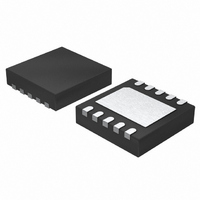LTC3407EDD-3#PBF Linear Technology, LTC3407EDD-3#PBF Datasheet - Page 11

LTC3407EDD-3#PBF
Manufacturer Part Number
LTC3407EDD-3#PBF
Description
IC REG DC/DC DUAL STEPDOWN 10DFN
Manufacturer
Linear Technology
Type
Step-Down (Buck)r
Datasheet
1.LTC3407EDD-3PBF.pdf
(16 pages)
Specifications of LTC3407EDD-3#PBF
Internal Switch(s)
Yes
Synchronous Rectifier
Yes
Number Of Outputs
2
Voltage - Output
0.6 ~ 5 V
Current - Output
1A
Frequency - Switching
1.5MHz
Voltage - Input
2.5 ~ 5.5 V
Operating Temperature
-40°C ~ 85°C
Mounting Type
Surface Mount
Package / Case
10-DFN
Lead Free Status / RoHS Status
Lead free / RoHS Compliant
Power - Output
-
Available stocks
Company
Part Number
Manufacturer
Quantity
Price
APPLICATIONS INFORMATION
Effi ciency Considerations
The percent effi ciency of a switching regulator is equal to
the output power divided by the input power times 100%.
It is often useful to analyze individual losses to determine
what is limiting the effi ciency and which change would
produce the most improvement. Percent effi ciency can
be expressed as:
where L1, L2, etc. are the individual losses as a percent-
age of input power.
Although all dissipative elements in the circuit produce
losses, 4 main sources usually account for most of the
losses in LTC3407-3 circuits: 1)V
switching losses, 3) I
1) The V
Electrical Characteristics which excludes MOSFET driver
and control currents. V
loss that increases with V
2) The switching current is the sum of the MOSFET driver
and control currents. The MOSFET driver current results
from switching the gate capacitance of the power MOSFETs.
Each time a MOSFET gate is switched from low to high
to low again, a packet of charge dQ moves from V
ground. The resulting dQ/dt is a current out of V
typically much larger than the DC bias current. In continu-
ous mode, I
the gate charges of the internal top and bottom MOSFET
switches. The gate charge losses are proportional to V
and thus their effects will be more pronounced at higher
supply voltages.
3) I
the internal switches, R
continuous mode, the average output current fl ows through
inductor L, but is “chopped” between the internal top and
bottom switches. Thus, the series resistance looking into
the SW pin is a function of both top and bottom MOSFET
R
DS(ON)
%Effi ciency = 100% - (L1 + L2 + L3 + ...)
R
2
SW
R losses are calculated from the DC resistances of
= (R
and the duty cycle (DC) as follows:
IN
current is the DC supply current given in the
GATECHG
DS(ON)TOP
= f
2
)(DC) + (R
IN
R losses, 4) other losses.
O
SW
current results in a small (<0.1%)
(Q
IN
, and external inductor, R
T
, even at no load.
+ Q
B
DS(ON)BOT
IN
), where Q
quiescent current, 2)
)(1 – DC)
T
and Q
IN
that is
B
IN
L
. In
are
to
IN
The R
be obtained from the Typical Performance Characteristics
curves. Thus, to obtain I
4) Other ‘hidden’ losses such as copper trace and internal
battery resistances can account for additional effi ciency
degradations in portable systems. It is very important
to include these “system” level losses in the design of a
system. The internal battery and fuse resistance losses
can be minimized by making sure that C
charge storage and very low ESR at the switching frequency.
Other losses including diode conduction losses during
dead-time and inductor core losses generally account for
less than 2% total additional loss.
Thermal Considerations
In a majority of applications, the LTC3407-3 does not
dissipate much heat due to its high effi ciency. However,
in applications where the LTC3407-3 is running at high
ambient temperature with low supply voltage and high
duty cycles, such as in dropout, the heat dissipated may
exceed the maximum junction temperature of the part. If
the junction temperature reaches approximately 150°C,
both power switches will turn off and the SW node will
become high impedance.
To prevent the LTC3407-3 from exceeding the maximum
junction temperature, the user will need to do some thermal
analysis. The goal of the thermal analysis is to determine
whether the power dissipated exceeds the maximum
junction temperature of the part. The temperature rise is
given by:
where P
is the thermal resistance from the junction of the die to
the ambient temperature.
The junction temperature, T
As an example, consider the case when the LTC3407-3 is
in dropout on both channels at an input voltage of 2.7V
I
T
T
2
RISE
J
R losses = I
= T
DS(ON)
D
= P
RISE
is the power dissipated by the regulator and θ
D
for both the top and bottom MOSFETs can
+ T
• θ
OUT
AMBIENT
JA
2
(R
SW
2
R losses:
+ R
J
, is given by:
L
)
LTC3407-3
IN
has adequate
11
34073fb
JA









